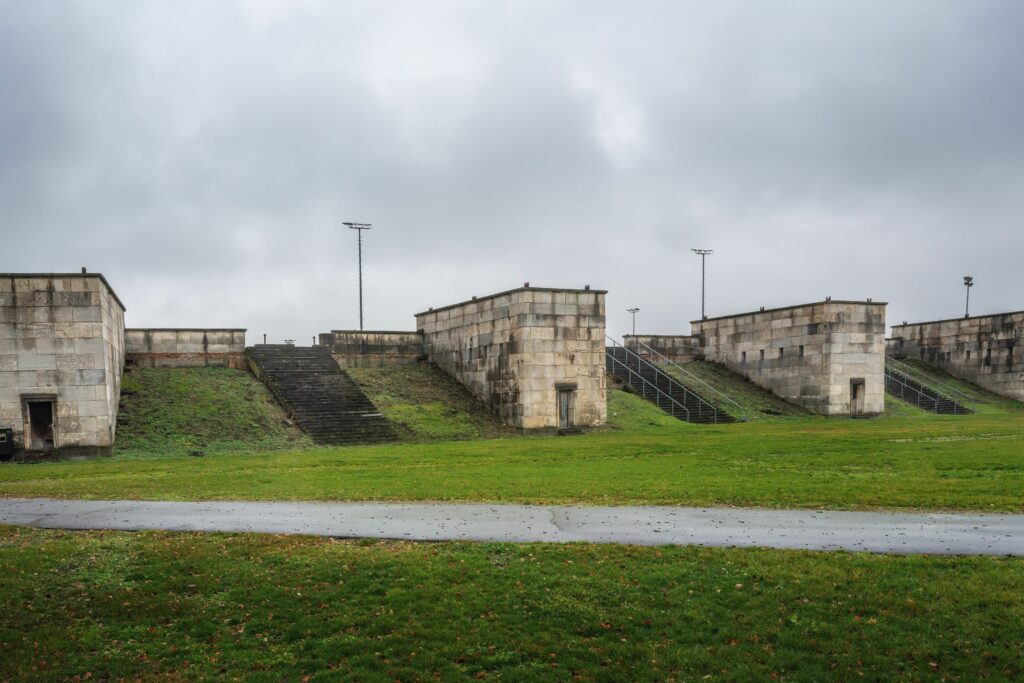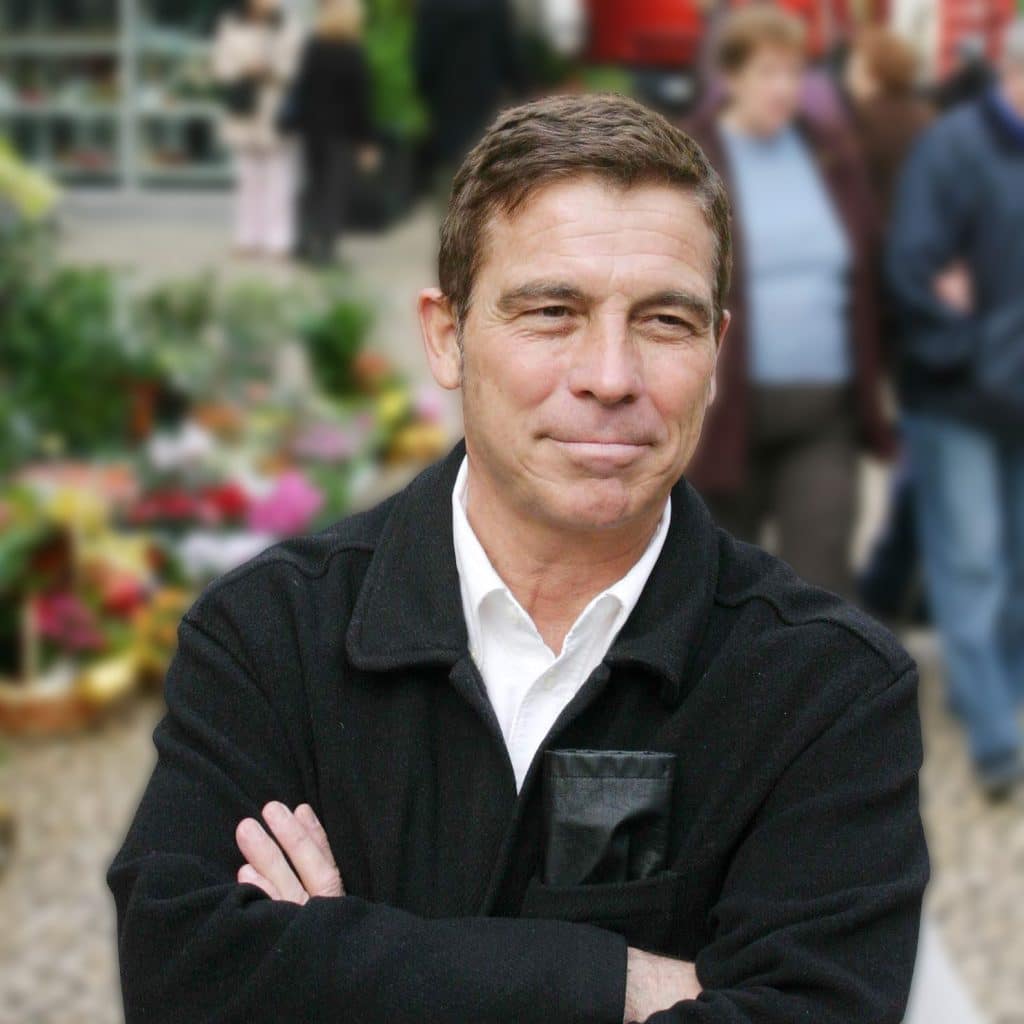Rumiko Handa
University of Nebraska-Lincoln, Lincoln, Nebraska
rhanda1@unl.edu
Introduction
This paper is a portion of a larger study that deals with the question of how architectural design can assist in bringing in meaningful ways an extremely difficult – notable but troubling – past to the present when applied to historical places. The study examines postwar architectural designs that converted Nazi perpetrator sites into memory places. And they are: NS (National Socialism) Documentation Center of the city of Cologne (opened in 1997) at the former Gestapo regional headquarters; Documentation Center Nazi Party Rally Grounds, Nuremberg (2001), housed in a portion of the building intended as a Nazi congress hall but which was still under construction at the end of the war; Topography of Terror, Berlin (2010), on the site of the buildings that had housed Gestapo and SS headquarters; and NS Documentation Center in Munich (2015), on the site where the so-called Brown House had contained the Nazi Party’s regional headquarters.
Documentation Centers on National Socialism
Museums and documentation centers on National Socialism and the Holocaust are part of Germany’s Vergangenheitsbewältigung, coping with or coming to terms with the past. The postwar history of Germany’s memory culture in general went through denazification by destruction, willful forgetfulness by profanation, self-victimization, and debates over how best to confront the difficult past. And how Germans have coped with the Nazi past is intricately reflected on the reconstruction of war-devastated cities, and is represented in the significant roles the museums and documentation centers on Nazism and the Holocaust play for local, national, and international audiences. These museums and documentation centers can be classified into, including: authentic sites, at which the historical event being commemorated took place, vs. nonauthentic ones; buildings designed by vs. adopted by the Nazi regime; Opferorte, victims’ places, vs. Täterorte, perpetrators’ places; urban vs. remote locations; and the subject matter, varying from a particular individual, event, or activity to more general history. The classification is useful in understanding diverse challenges and opportunities in postwar dealings with various types of buildings.
Continuity in/of Time at Historical Places That Carry Extremely Difficult Pasts
The selected cases faced the same challenge: how to make present material evidence of the community’s involvement in Nazism as its agents, corroborators, or bystanders in an authentic Täterort, but in a place that also had a prior history of peace and is now part of people’s everyday life. First, the cases are at authentic sites, in the sense that the past being recalled actually took place there. Second, the sites refer to an extremely difficult past, having historically been Nazi Täterorte, or perpetrators’ places where evil deeds were conceived, as compared to Opferorte, victims’ places. While at victims’ places, we tend naturally to associate ourselves with victims, at perpetrator’s places, we cannot escape from putting ourselves in the shoes of perpetrators. While it is very difficult and painful to recall an experience in which one was the victim, it is extremely difficult for each city and its citizens to remind themselves not only of the genocide but also of the fact that they themselves or the people they closely associate with were involved in Nazism as its agents, corroborators, or bystanders. The third selection criterion is that they have been converted to memory places, that is, institutions whose intended purpose is to engage visitors in the remembrance of the past. It is not always appropriate to turn any perpetrators’ building to a memory place. Also, not all authentic perpetrator sites can be turned into memorial sites. But it is paramount to provide meaningful presentations of the past at memory places. The fourth criterion is that the buildings are located close to the urban core, which makes them part of everyday life for many. And last but not least, sites had peaceful prior histories before they were used by the perpetrators. And this is where the notion of continuity in and of time is crucial. Once the evil force is eliminated, both the city authorities and citizens desire, on the one hand, to return the district to its distant past, bringing the peace back to the area. On the other hand, they also want the building to carry their extremely difficult memory of the immediate past, providing lessons for the present and future. In balancing these two, often conflicting, objectives, the notion of “meaningful presentation of the past” in the research question becomes especially important. What constitutes a “meaningful” presentation is a part of this study’s discussion; however, for the time being, it includes a reinforcement of the current community’s critical stance against Nazi ideology, its criminal deeds, and the community involvement in them.
Architecture as a Presenter of the Past at Historical Places
No agreement or understanding exists in- or outside the architectural discipline regarding how, if at all, architectural design can serve as a presenter of the past at historical places. Winfried Nerdinger, respected architectural historian and the former Director of NS Documentation Center
Munich, stated in 1990 that, while there is no denying that “the stone turned into history” is the “strongest form of visual memory,” it “must, however, be made readable by appropriate instructions.” But, as to the question of how to provide the “appropriate instructions,” Nerdinger stated that the task of making the history of a place readable was assigned to historians, and, I may add, in the case of history museums, to the exhibit developers. When it comes to architectural design applied to historical places, professionals and non-professionals alike expect it to be a container for the exhibit or a visual attraction to draw people to the exhibit. Architectural design needs to play a more active role.
Methodology
In order to promote such architectural designs, the study engages in a comparative analysis of existing designs. It employs careful on-site studies of the buildings, and an archival study of the materials, including: architectural drawings; correspondences between the client, the architect, and the architect’s collaborators; and various records related to the design and construction of the building, and discussions with the curators, archivists, and librarians at the documentation centers as well as the architects and designers of the centers.
For the consideration of the continuity in and of time, each Documentation Center has three distinct pasts that need to be identified: the “distant past,” which refers to the time before 1933 when Adolf Hitler was appointed Chancellor and the NSDAP (National Socialist German Workers’ Party) seized state power; the “difficult past,” which is from 1933 to 1945 and the subject matter of each Center; and the “immediate past,” from the end of the Second World War to the opening of the Center. This paper provides brief descriptions of the four cases’ distant, difficult, and immediate pasts, and discusses four different design strategies, selecting one of the most important from each case. These design strategies in different ways negotiate with remaining fabric of the historical place, in order to present a difficult past in meaningful ways.
- Cologne – Recreating Experiences of the Difficult Past
- Nuremberg – Inflicting Physical Scars on the Historical Building from the Difficult Past
- Berlin – Digging up the Evidence of Destruction of the Difficult and Immediate Pasts
- Munich – Contrasting the Styles between the Difficult Past and the Present
Conclusion
While the selection criteria for architectural cases are highly selective among institutions of commemoration, what are found in this study is applicable to a wider range of cases that are beyond these criteria. The research question is meant for not only buildings associated with Nazism and the Holocaust but also general debates on the treatments of historical places of other kinds of difficult pasts. The study offers a discourse much needed in the current political climate.
References
Adorno, Theodor W. “The Meaning of Working through the Past,” in Critical Models: Interventions and Catchwords. New York: Columbia University Press, 2005: 89–103.
Arendt, Hannah. “Eichmann in Jerusalem,” I-V, The New Yorker, February 16 – March 16, 1963.
Bucholtz Erika, et al. Site Tour “Topography of Terror” History of the Site. Berlin: Topography of Terror Foundation, 2016.
Glaser, Hermann. “The Majority Could Have Stayed away without the Risk of Repression,” The German Public and the Persecution of the Jews, 1933-1945,ed. byJörg Wollenberg and Rado Pribić. Atlantic Highlands, N.J: Humanities Press, 1996: 15-21.
Macdonald, Sharon. Difficult Heritage: Negotiating the Nazi Past in Nuremberg and Beyond. New York: Routledge, 2009.
Nerdinger, Winfried. “Umgang mit den Spuren der NS-Vergangenheit – Indizien zu einer Geschichte der Verdrängung und zum Ende der Trauerarbeit,” Wolfgang Ruppert, Hochschule der Künste Berlin, and Karl-Hofer-Symposion, “Deutschland, bleiche Mutter” oder eine neue Lust an der nationalen Identität?: Texte des Karl Hofer Symposions, 12. – 17.11.1990. Berlin: 1992: 51-60.
_______. Architektur – Macht – Erinnerung: Stellungnahmen 1984-2004, ed. By Christoph Hölz and Regina Prinz. München: Prestel Verlag, 2004.
Archives
Architekturzentrum Vien.
DAM Deutsches Architekturmuseum, Frankfurt.
NS Documentation Center in the City of Cologne Library.
NS Documentation Center Munich Administration. Topography of Terror Foundation Library.




